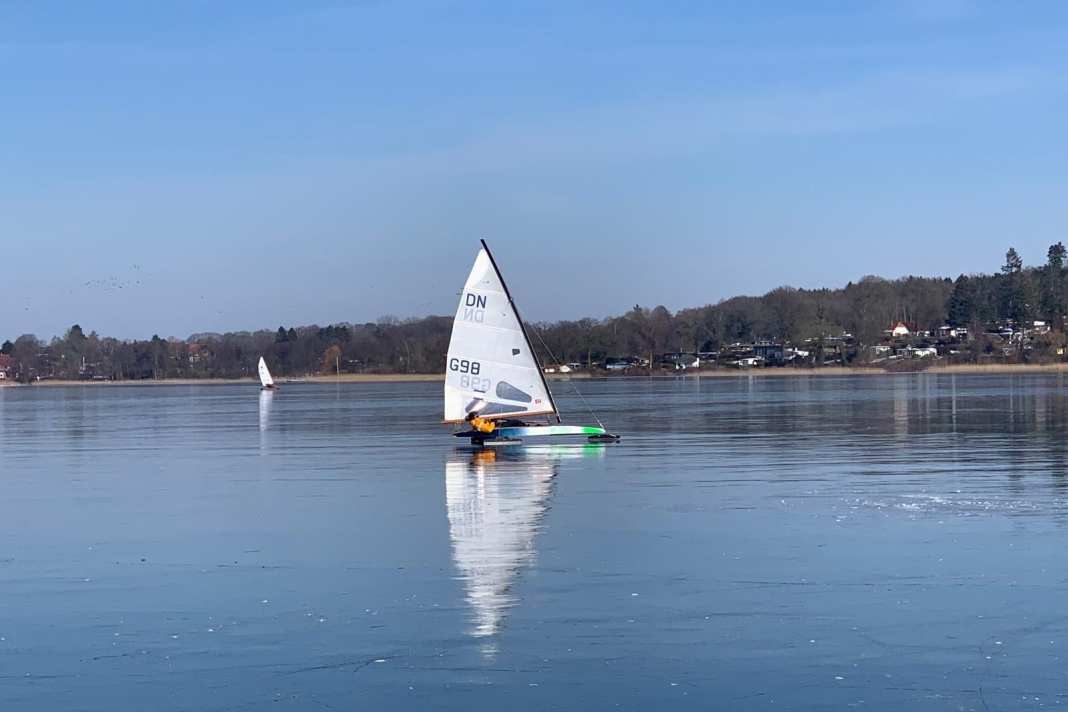





Ice sailors are currently able to race their sledges around German waters at top speeds. While ice sailing, which first emerged in the 17th century, used to be a matter of course in some areas in this country, such as the Bodden near Wustrow, the Szczecin Lagoon or the Wittensee and Wörthsee lakes in almost every winter, it has become a rarity in recent years and decades. Instead, ice sailors today often have to travel long distances to be able to sail on ice at all.
Climate change and the associated shift in the jet stream have a massive impact on the availability of suitable ice surfaces and pose challenges for sailors in the cold season. The dying group of German ice sailors should therefore be all the more pleased that their hobby is currently possible on Lake Pönitz near Scharbeutz or on Lake Rottach in the south.
Over 100 participants at the DN Sled World Championships
At least 15 centimetres of core ice, preferably without air pockets and snow, but as smooth as glass: these are the ideal requirements for scratching your tracks into the frozen water when ice sailing. For example, with a DN sled, which emerged from a design competition organised by the Detroit News in 1930. Speeds of around 100 kilometres per hour are no problem with the 3.70 metre long designs. In addition to the somewhat larger and less common "XV" class, there are also variants that can manage on the ice under sail without a sled. In combination with skates, a surf rig with a soup ladle under the foot of the mast is used for "wave surfing", while others use the wing from wingsurfing or even a kite.
In addition to pure fun with plenty of adrenaline, the DNs in particular are also actively sailed in regattas. The World Championship recently took place on Lake Winnebago in the US state of Wisconsin with over 100 participants, including four German ice sailors. The races are characterised by their short duration of a maximum of 20 minutes and the special inline course (in Europe) with safety-enhancing exclusion zones to leeward or windward of the windward or leeward buoy. In addition, the position on the starting line is allocated by lot: sailors with even starting numbers position themselves on the left half of the starting line on the port bow, while those with odd numbers take the right half on the starboard bow.
Climate change: Is ice sailing on the brink of extinction?
However, events are now increasingly being postponed, sometimes even with a change of location. The start of the season is also constantly being pushed back. Where the first regattas used to take place at the end of October, the season now often doesn't start until mid-November.
With the warm front now approaching, the current winter luck of the ice sailors is likely to melt away by the weekend at the latest. For some larger lakes, such as Lake Ratzeburg in Schleswig-Holstein, which is currently not completely frozen over, it has once again not been enough. Until 1987, the inland area south of Lübeck was reliably supplied with ice every year, and ice sailing was last possible there four years ago.
